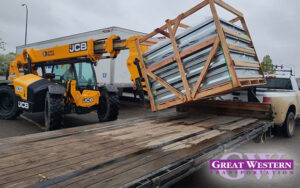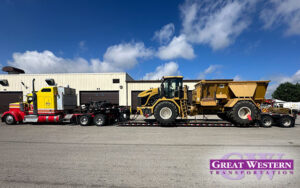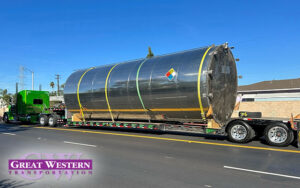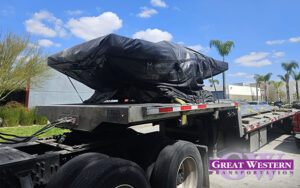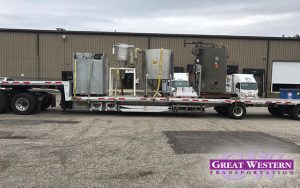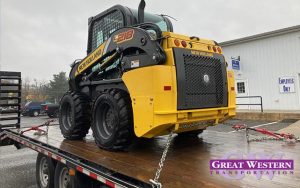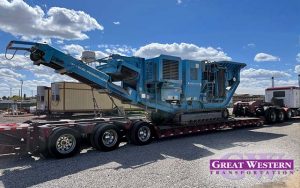Heavy-haul trucking is a specialized logistics service that covers a wide range of possible cargoes. While the name suggests that the issue is only the weight of your cargo, heavy-haul trucking also includes the transport of oversized cargo that requires special permits and escorts to ensure safe passage from origin to destination.
You may have seen heavy-haul convoys on the open highway, carrying large vehicles, enormous turbine blades, and even half-homes with a full multi-vehicle escort. Just what can you ship with heavy-haul trucking? Let’s take a closer look.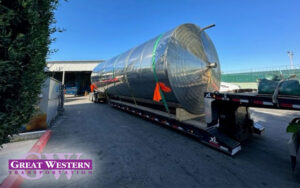
Heavy and Oversized Shipments
Heavy-haul trucking involves both extremely heavy and too-wide cargoes that can’t be safely transported without both heavy-duty trucks and special safety measures. This includes large construction and industrial equipment, modular homes and preconstructed buildings, and huge assembly parts.
Large Construction Equipment
- Cranes
- Excavators
- Bulldozers
You will often see construction and farming equipment transported via heavy-haul trucking. This includes cranes, excavators, and bulldozers that are extremely heavy, often wider than a highway lane, and cannot travel at highway speeds on their own.
Modular Home Sections
- Completed Sheds
- Modular Home Halves, Thirds, and Quarters
- Tiny Homes
Pre-constructed buildings or modular building pieces are typically transported using heavy-haul trucking methods. This includes both modular home sections and complete tiny homes.
Huge Assembly Pieces
- Airplane Parts
- Wind Turbine Blades
Equipment and machinery assembled from huge singular parts may require part transport using heavy-haul trucking. One of the best examples is turbine blades. Most of us have come across more than a few out on the highways, in which a single blade requires a massive trailer and a special convoy to carry to the turbine location.
Industrial Equipment
- Generators
- Boilers
- Storage Tanks
Large industrial equipment to be installed in a commercial-scale facility may also require heavy-haul trucking. For example, full-sized generators, boilers, or storage tanks large enough to service a multi-story or expansive building may call for oversized and heavy-load transport.
Do you have something oversized or extremely heavy to transport? Call Great Western Transportation to arrange for the heavy-haul trucking services you need.





